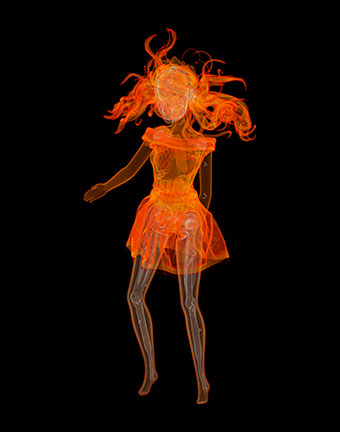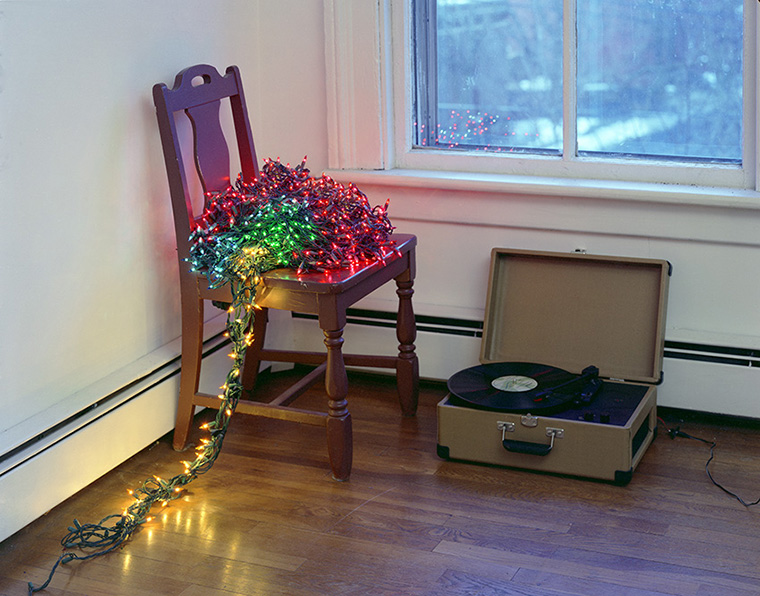
Image Credit: Radiology Art
H/T to The New York Times
In The Order of Things, Foucault argues that the formation of biology (as discipline, discourse) out of 18th-century natural history hinged on a new conceptualization of “life,” which insisted upon “the dividing-line between organic and inorganic…the antithesis of living and non-living.” However, two intriguing contemporary art projects suggest that our 21st-century visualizations of Life can no longer resist the vital hum of objects.
Kevin Van Aelst re-purposes everyday materials to make science, especially the science of life, more visible, immediate, and relevant to non-specialists. In one photograph, a Halloween pumpkin wears a beta-carotene-structural-formula grin. In another, cellular mitosis is tastily schematized via Krispy Kremes. However, there’s an effect of inertness, lifelessness in these composed images—e.g., the Central Nervous System becomes a sad, tangled heap of Christmas lights, spinal cord trailing on the floor, in some anonymous hipster’s apartment.

Image Credit: Kevin Van Aelst
H/T to io9
Artist-turned-medical-student Satre Stuelke also walks the line between life and death, organic and inorganic, in his Radiology Art. These pieces re-animate cultural icons, like Barbie, imbuing them with a kind of vital warmth. Curiously, a CT scan, which reduces the human body to its component organs, bone, and tissue, provides an animating force to non-living specimens. At the same time, toys, fast food, and electronics are treated (and diagnosed) like human bodies—with a kind of loving care and attention that suggests some level of affinity and identification.
Van Aelst’s photographs are fun and inventive insertions of science into the everyday, but perhaps hindered as effective science communication by forcefully willing science into our routines, our holidays, our hair. We don’t ultimately share in the artist’s process. In contrast, Stuelke's works, especially when accompanied by their playful captions, function as an invitation to see. His project also fosters a sense of complicity, giving us rare, unauthorized access to the visual realm of medical/technological expertise and appropriating it for cultural, aesthetic, existential diagnosis. Despite Stuelke’s hey-I’m-just-goofing-around-with-my-CT-scanner stance in this New York Times article, his images succeed because they invite us to participate, asking us to inquire more closely about the objects of our existence.


Recent comments
2 years 29 weeks ago
2 years 44 weeks ago
2 years 44 weeks ago
2 years 50 weeks ago
3 years 4 weeks ago
3 years 4 weeks ago
3 years 4 weeks ago
3 years 6 weeks ago
3 years 6 weeks ago
3 years 6 weeks ago